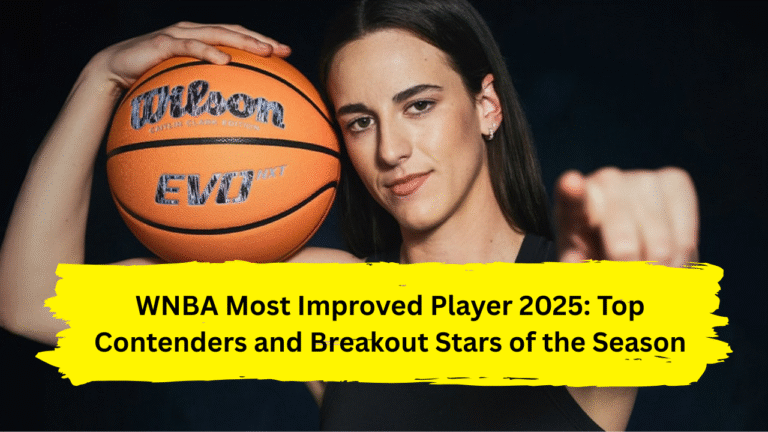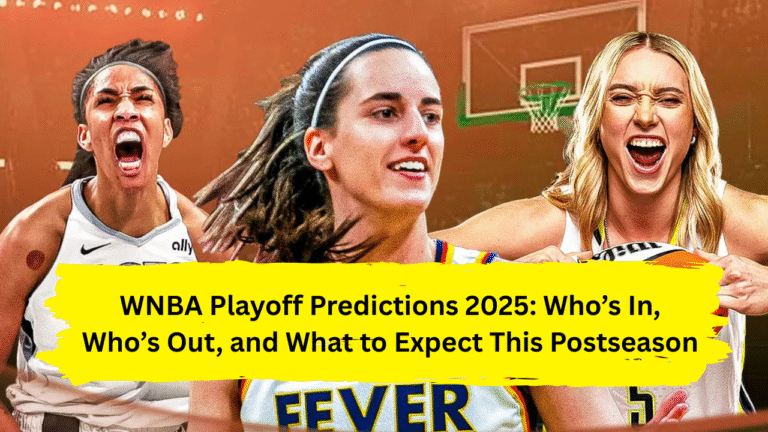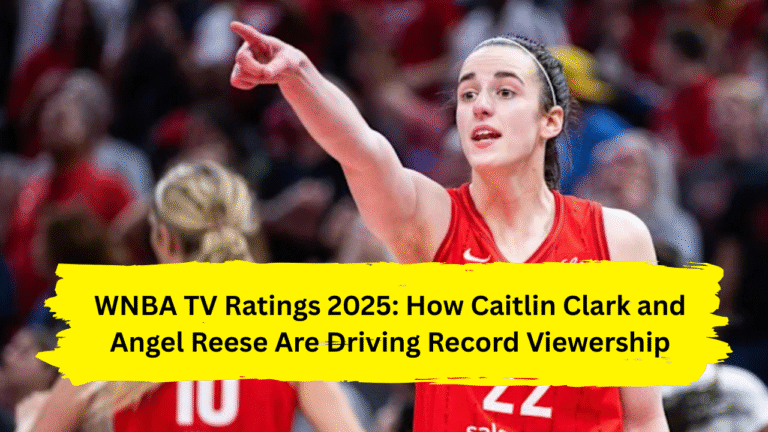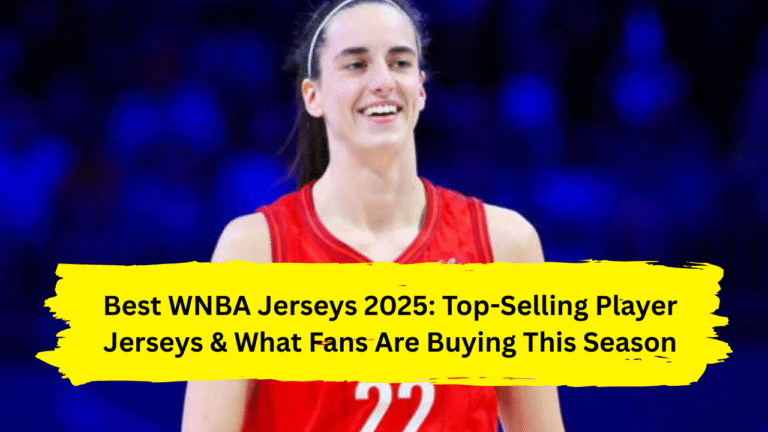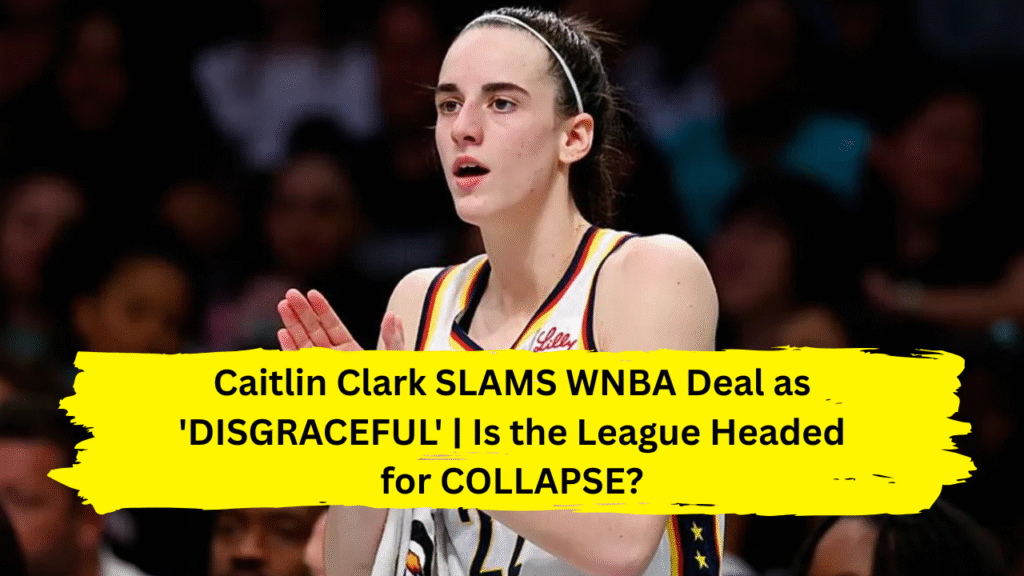
Introduction: Caitlin Clark Just Shook the WNBA
Rookie sensation Caitlin Clark has once again taken center stage—but this time, it’s not for a logo three-pointer or another sold-out arena. In a bold and unfiltered moment, Clark reportedly slammed the WNBA’s latest collective bargaining agreement (CBA) proposal as “disgraceful”, sparking a fiery debate across the sports world. With talk of a strike on the table and the league’s future hanging in the balance, fans and analysts are wondering: Is the WNBA headed for collapse?
Let’s break down the deal, what Clark actually said, and what this could mean for the future of women’s basketball.
Who Is Caitlin Clark and Why Her Voice Matters
Caitlin Clark isn’t just any rookie. She’s the rookie.
The former Iowa Hawkeye is the NCAA’s all-time leading scorer with nearly 4,000 points. She’s packed arenas, driven up TV ratings, and sparked a renewed interest in women’s basketball that the WNBA hasn’t seen since the early 2000s.
Her impact?
- TV viewership up 20%
- Indiana Fever ticket sales up 30%
- Jersey sales through the roof
So when Caitlin Clark speaks, the league listens—and so should we.
What’s in the WNBA’s New CBA Proposal?
The league and the Women’s National Basketball Players Association (WNBPA) are currently negotiating a new CBA, the agreement that dictates player salaries, travel, health care, and overall working conditions.
Here’s a quick overview of what’s allegedly on the table:
- Only 10-15% salary increase
- No substantial expansion of revenue sharing
- Limited upgrades to player benefits and travel
- No guaranteed increase in charter flights or mental health resources
Despite massive growth in league revenue and sponsorships, the proposal doesn’t match the energy and momentum players like Clark are generating.
Why Caitlin Clark Called It ‘Disgraceful’
Clark, alongside veteran voices like Nneka Ogwumike and Chelsea Gray, is reportedly furious over the proposed deal. And for good reason.
The WNBA brought in over $200 million in 2024, signed new mega-deals with ESPN and Amazon, and is expanding with a new team in Toronto. Yet, players are still:
- Earning an average of $120,000 a year
- Flying commercial flights for away games
- Using outdated facilities and limited health services
Meanwhile, NBA players average over $8 million per year. That’s not just a gap—it’s a canyon.
Clark’s comment that the proposal is “disgraceful” has ignited conversations around pay equity, gender fairness, and player rights.
The Pay Gap: Breaking It Down
Let’s compare some numbers:
| League | Average Salary | Top Player Salary |
|---|---|---|
| NBA | $8.5 million | $50 million+ |
| WNBA | $120,000 | ~$250,000 |
Top WNBA stars like Breanna Stewart or A’ja Wilson still earn only a fraction of what their male counterparts make. Even with booming business and sold-out venues, the numbers don’t add up.
According to Sportico, the WNBA’s media footprint has grown by over 240% in the past two years. The players want—and frankly deserve—a bigger piece of that pie.
Why Players Might Strike
With this latest CBA offer falling short, talk of a player strike in 2025 is picking up steam. If negotiations don’t progress, players could walk out—and that could be devastating for the league’s momentum.
But the players aren’t just fighting for higher paychecks. They’re pushing for:
- Revenue sharing (like the NBA’s 50/50 model)
- Better travel conditions (charter flights across the board)
- Mental health and wellness services
- Investment in training, nutrition, and development
They want a career—not a seasonal hustle.
A League in Flux: Is Collapse Possible?
Is the WNBA really in danger of collapsing?
While that may sound dramatic, the threat is real. A prolonged strike could:
- Delay or cancel the 2025 season
- Alienate new fans and sponsors
- Halt expansion plans, including the Toronto franchise
- Damage public trust and league credibility
And with alternative options like overseas leagues or the upcoming Unrivaled 3-on-3 women’s league, top-tier talent may walk away entirely if the WNBA doesn’t get serious.
Clark’s Leadership: Rookie or Revolutionary?
Critics argue Caitlin Clark should “stay in her lane” and let the veterans handle negotiations. But here’s the thing—she IS the lane right now.
Clark has already done more to elevate the WNBA’s visibility than most marketing campaigns combined. She has:
- The fans
- The spotlight
- The leverage
She’s not grandstanding. She’s leading. And with full support from the WNBPA, her stance is sparking a movement, not just a moment.
Veteran Support and Union Solidarity
Clark isn’t alone. Veterans like Nneka Ogwumike, Chelsea Gray, and Alyssa Thomas have all echoed concerns over how slow the league has been to support the athletes financially and physically.
The players are united in demanding a modern CBA that reflects the realities of the modern game.
What a Better CBA Could Look Like
If the league wants to keep its stars and fans happy, here’s what a restructured deal might include:
- 25-30% base salary increase
- 50/50 revenue sharing model
- Full-season charter flights
- Expanded benefits and child care
- Investments in state-of-the-art facilities
This isn’t charity. It’s return on investment.
What Fans Can Do Right Now
This fight isn’t just on the players. Fans have power, too.
✅ Watch games and stream them live
✅ Buy jerseys and WNBA merch
✅ Follow and share player stories on social media
✅ Support union efforts by spreading awareness
✅ Hold the league accountable for player treatment
The louder the fan base, the harder it is for the league to ignore.
What Happens Next? Three Possible Outcomes
-
Negotiation Breakthrough
- The league makes a better offer.
- Players accept and avoid a strike.
-
Players Strike
- Season delayed or canceled.
- Heavy pressure on WNBA and sponsors.
-
Status Quo Continues
- Friction simmers.
- Growth stalls.
The clock is ticking—and all eyes are on the WNBA front office.
Conclusion: The WNBA’s Future Hangs in the Balance
Caitlin Clark calling the CBA “disgraceful” isn’t just a hot take—it’s a wake-up call. The WNBA is growing, fast. But if the league fails to match that growth with fair pay, better working conditions, and true investment in its stars, it risks losing everything it has gained.
Clark’s courage to speak out so early in her career sets the tone for a new generation of athletes—one that won’t settle for less. Whether you agree with her or not, one thing is clear: the WNBA is at a crossroads.
And if the league doesn’t act soon, it may not like what’s on the other side.

